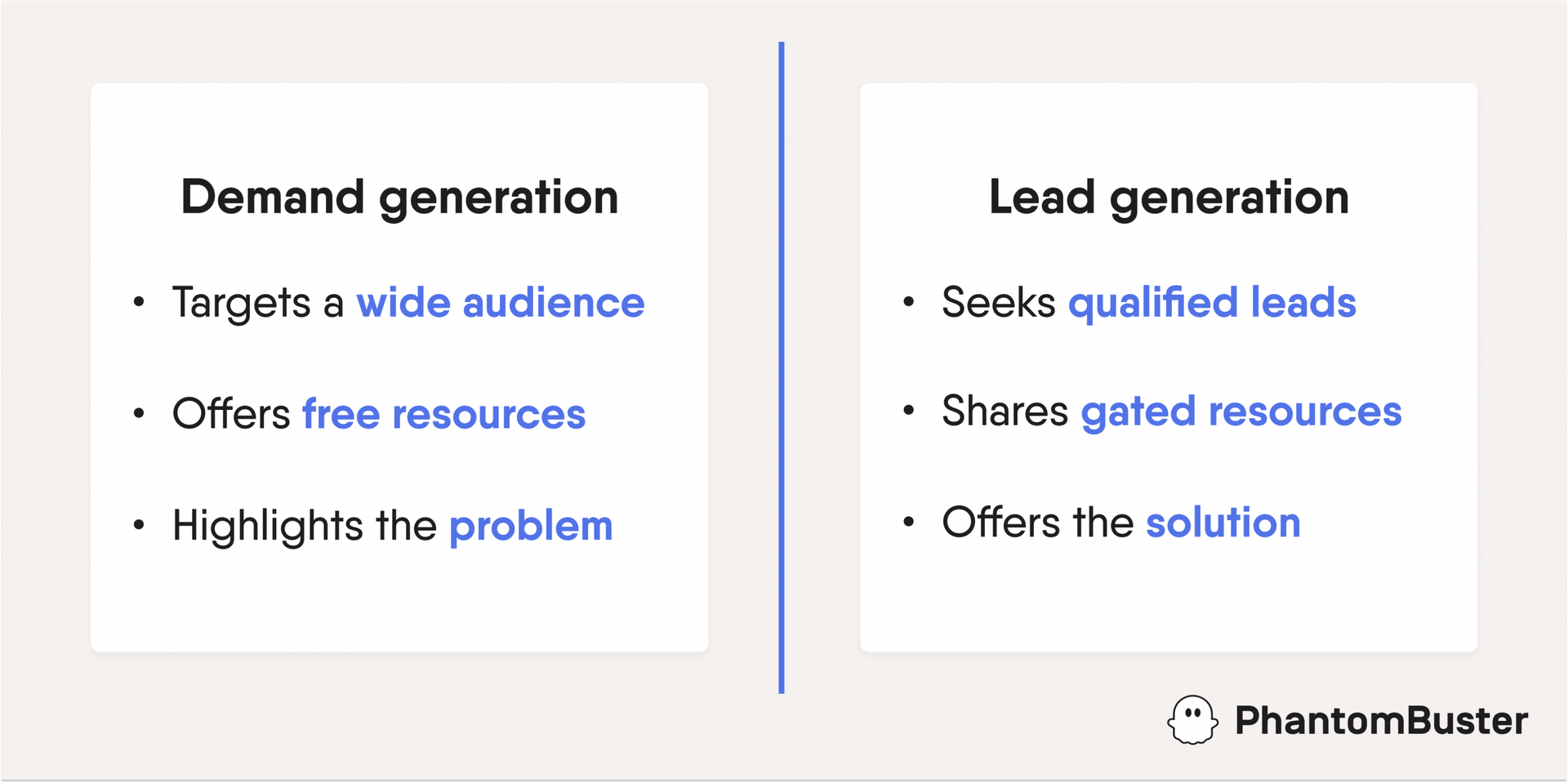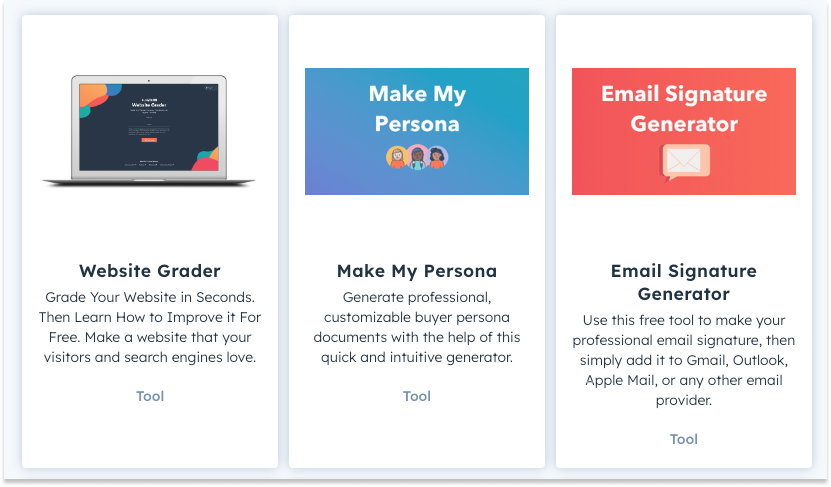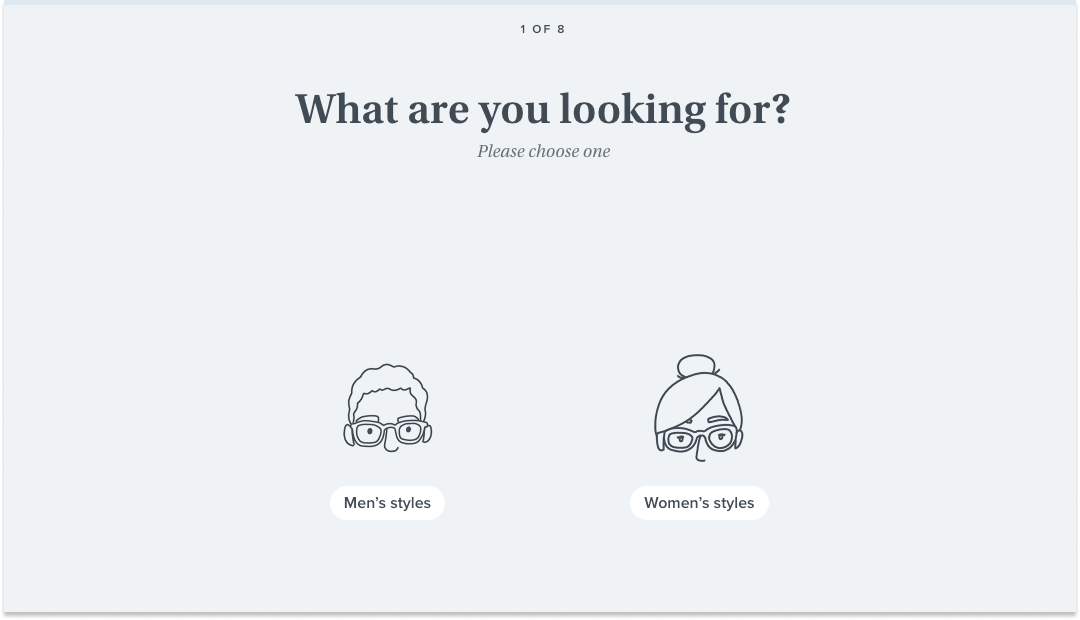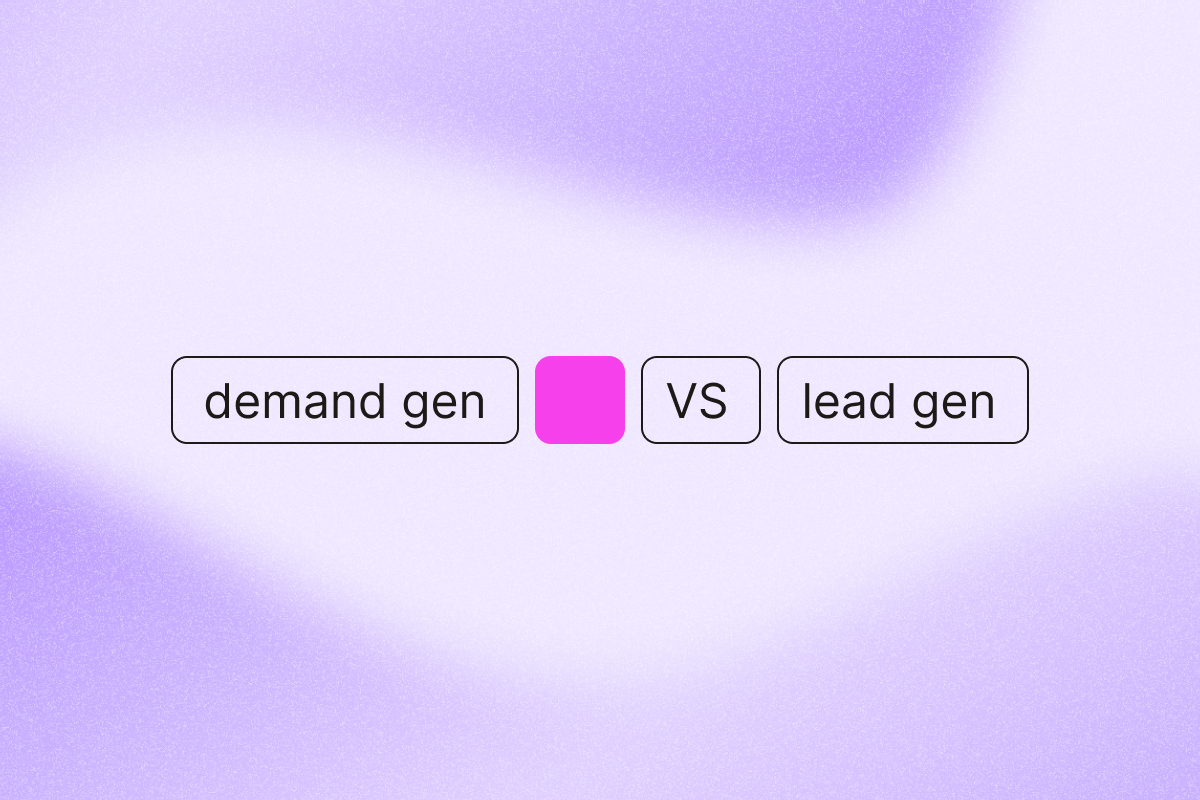Let’s get into the details.
Demand generation vs. lead generation
Demand generation is about making people aware of your brand, while lead generation is about encouraging them to become your customers.
In other words, they each function at different stages of the buying process. First, you want to attract your target audience (demand generation), then you can establish contact and motivate them to buy (lead generation).
You can also think of it in the context of that funnel that marketers are so fond of.
Here’s a quick reminder:
- Awareness: People discover your brand
- Consideration: They weigh up whether your product will work for them
- Conversion: A purchase is made
- Loyalty: The buyer trusts your company enough to buy again
- Advocacy: The customer loves your business so much that they refer it to other leads
Demand generation focuses on the top of the funnel during the ‘Awareness’ and ‘Consideration’ stages, while lead generation comes into play at the bottom.
You can see it mapped out in the sales and marketing funnel below.

Demand generation vs. lead generation strategies
There are three main strategy differences to remember when comparing demand and lead generation. Think of it like “the 3 A’s”!
1. The audience
Demand gen will focus on reaching a wider pool to boost awareness. On the other hand, lead gen zooms in on high-quality prospects who are more likely to convert.
2. The approach
Demand gen will create free, relevant content to generate interest and set up the business as a brand authority. On the other hand, a lead gen strategy will create gated content where prospects must submit their email and other contact information to read it.
3. The angle
A demand gen strategy highlights the target audience’s problem, while lead generation will offer the customer a solution to their problem.

Demand generation vs. lead generation campaigns
So what would a demand gen vs. a lead gen campaign look like? And what data would you measure to determine their success?
Let’s jump into some quick sales and marketing examples.
Demand generation examples
As we saw before, demand gen campaigns focus on hyping up your company and attracting as many potential customers as possible. They rely especially on inbound marketing techniques, using content and social media to grow brand awareness.
With that in mind, here are some typical demand-generation campaigns that you could create.
- Free giveaways: Offering free resources, content and tools can attract a large number of prospects and give them an idea of your value
- Social media posts: Setting yourself up as a thought leader on social media with relevant, shareable content can build brand interest
- Guest blogs: Posting content on other people’s blogs can increase your visibility and drive traffic back to your own company site
For example, Hubspot offers free tools to help people instantly ramp up their sales and marketing strategy, which is an effective way to draw attention to their brand and deliver instant value quickly.

Demand generation KPIs (key performance indicators)
Firstly, you can measure organic traffic data to understand how many people visit your site without paid ads. Secondly, you could use a cost per mille (CPM) calculator to measure the cost per thousand views of your advertisement. Thirdly, you could also check your social media analytics to see how many people engage with your content and find it relevant.
Lead generation examples
It’s crunch time! We’ve gathered our audience, and now we want to get some top-quality leads and motivate them to convert and buy our product.
Here are some lead generation campaign examples to inspire you.
- Webinars: Creating a gated masterclass allows you to promote your business and encourage leads to try it out
- Quizzes: Using interactive content—such as self-assessment tools—can boost conversions if people need to submit their email or sign up to get the results
- Cold email sequences: Sending timed, personalized emails can guide potential customers along the funnel and motivate them to convert
Lead generation KPIs
The most straightforward metric could be your conversion rate, the percentage of leads who make a purchase. Secondly, you could measure the marketing ROI per campaign, which weighs the costs compared to the revenue generated. Thirdly, you could look at the time to purchase to see how quickly someone becomes a buyer.
For example, Warby Parker offers a quiz to help “find your frames.” The quiz allows people to enter their email addresses to access the results. It also redirects to a page of recommendations based on the quiz answers so people can purchase straight away.

Combining the power of demand gen and lead gen
Demand and lead generation work together like salt and pepper: you can’t have one without the other. They’re a team.
For example, if you focus exclusively on demand gen, you’ll have a huge target audience with no way to filter them. And if you only do lead gen, you may struggle to get conversions as the customer hasn’t gotten to know your brand or product first.
The dream recipe for sales and marketing success is to use a mix of both of these strategies.
Here’s an example of what an effective combined demand generation and lead generation campaign could look like.
Step #1 – Demand generation
Use your social media channels to promote a free ebook for potential leads to read, on a topic linked to your industry.Step #2 – Lead generation
At the end of the content, add a webinar invitation link for those who want to learn more. Use the webinar to promote your business and encourage leads to convert.
How PhantomBuster helps sales team bring in leads
Great, so you’re feeling excited about demand gen and lead gen.
But let’s be honest; creating communities, searching for emails and pushing for engagement can completely take over your schedule.
What if you could automate the boring, manual parts of this process?
What is PhantomBuster?
PhantomBuster helps you to generate leads from all major networks and websites, with 100+ ready-made automations that anyone can use.
You can let everything run on autopilot at the click of a button while you focus on more important things.
There’s an effective automation for everything you can think of; from collecting email addresses from LinkedIn, to auto-following on Twitter, to finding contact data from Google Maps.
Conclusion
You’ve made it through the whirlwind tour of demand gen vs. lead gen, and you should have plenty of ideas to use together as a team for maximum effect.
Plus, check out PhantomBuster to complement your marketing efforts, and the process will be even easier.
